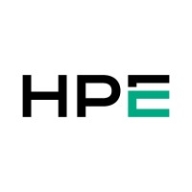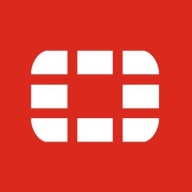

Aruba ClearPass and Fortinet FortiNAC compete in the network access control category, focusing on enhancing network security. ClearPass appears to have the upper hand due to its integration flexibility and extensive support for multi-vendor environments.
Features: Aruba ClearPass includes advanced policy enforcement, guest onboarding, and support for multiple vendors. It offers strong integration with third-party systems and supports various networking protocols. Fortinet FortiNAC provides robust user device management, endpoint compliance, and network segmentation, focusing on user and device security.
Room for Improvement: Aruba ClearPass can improve its user interface simplification and documentation for advanced features. Licensing is complex, and some vendor integrations need enhancement. Fortinet FortiNAC requires better integration with third-party products, device classification, and reporting capabilities. ClearPass faces onboarding challenges, while FortiNAC has a high learning curve and device compatibility issues.
Ease of Deployment and Customer Service: Aruba ClearPass is challenging to implement due to its complexity, with mixed technical support experiences. Customer service is generally responsive and knowledgeable. Fortinet FortiNAC, primarily on-premises, is praised for customer service, though technical support can vary in responsiveness. ClearPass is complex, whereas FortiNAC is easier to use after setup.
Pricing and ROI: Aruba ClearPass is expensive with a complex pricing structure but offers good long-term ROI by reducing ongoing management costs. Fortinet FortiNAC's pricing is competitive and provides good value for money. Both products deliver strong ROI due to their security features and management capabilities.
Using Aruba ClearPass has resulted in less engineering time compared to other products we've used.
The investment is huge for enterprise clients, but Aruba ClearPass makes processes easier.
Portnox is one level up, as their customer support is outstanding.
We have faced delays in the resolution of production issues after raising tickets, which impacts productivity.
We have escalated questions to tech support, and I would rate the technical support an eight out of ten.
They provide sessions to help with various questions.
They could do more to improve, not because of the product itself but because of the support they provide.
I believe the scalability of ClearPass is rated as ten out of ten.
Everything will be handled when you add new users because all configurations are deployed from the beginning.
In our environment, ClearPass handles up to 100,000 users, which is better than some other NAC solutions like Fortinox that scale up to 25,000.
The pricing model makes it challenging as the cost is substantial due to the per-node licensing model.
There are issues with some versions, especially in integrating with AD and SSL configurations over port sixty-three.
There aren't many stability issues, but sometimes the guest management function occasionally throws errors.
The language and policy enforcement mechanisms are not clear, making it difficult to use the product effectively.
It is also better to improve threat intelligence for built-in threat detection and prevention.
A more streamlined menu of licensing options would be helpful.
Improvement in the interface design would make FortiNAC a better solution.
The graphical user interface (GUI) of Fortinet FortiNAC is very poor compared to competitors like Forcepoint and Cisco ISE.
Achieving the best price requires careful selection from a menu of licensing options.
We cannot mix in prices, and of course, prices are going higher.
Aruba ClearPass is a premium product with higher pricing, which seems unnecessary given its complexity.
Fortinet FortiNAC is relatively cheap compared to other solutions.
The ClearPass solution has reduced the amount of engineering time compared to previous solutions, making it more efficient for our purposes.
The most effective feature for us is the OnGuard feature.
Aruba ClearPass is a very user-friendly solution compared to Cisco ISE.
I appreciate the feature where it can connect with different vendor equipment, regardless of the network devices from other vendors.
The main advantage of Fortinet FortiNAC is its integration with the entire Fortinet product portfolio.
| Product | Market Share (%) |
|---|---|
| Aruba ClearPass | 23.6% |
| Fortinet FortiNAC | 17.9% |
| Other | 58.5% |


| Company Size | Count |
|---|---|
| Small Business | 44 |
| Midsize Enterprise | 25 |
| Large Enterprise | 32 |
| Company Size | Count |
|---|---|
| Small Business | 30 |
| Midsize Enterprise | 12 |
| Large Enterprise | 14 |
Aruba ClearPass is a network access control (NAC) solution that provides a range of security and access management capabilities for wired, wireless, and VPN networks. ClearPass enables organizations to secure their networks and devices, enforce security policies, and provide secure access to network resources.
Aruba ClearPass Features
Aruba ClearPass has many valuable key features. Some of the most useful ones include:
Aruba ClearPass Benefits
There are many benefits to implementing Aruba ClearPass. Some of the biggest advantages the solution offers include:
Reviews from Real Users
Aruba ClearPass is a solution that stands out when compared to many of its competitors. Some of its major advantages are that it’s easy to use, has a valuable Guest Captive Portal and virtual security enforcement, and has a good web dashboard and policy manager.
“It is easy to use and more integrated with the Aruba wireless networks,” says Muhammad N., Network & Information Security Engineer at a healthcare company.
Ammar F., Head of IT at Hubtech, explains, “What I like most about Aruba ClearPass is that it has the best enforcement feature for the network. I also like its Guest Captive Portal and virtual security enforcement features, but the virtual security enforcement feature is still under testing by my company. Aruba ClearPass also has a wonderful UI which I find valuable."
Another PeerSpot reviewer mentions, "The web dashboard and the policy manager are very intuitive and very easy for the engineers to use."
Fortinet's FortiNAC is a network access control solution that provides visibility, control, and automated response for everything that connects to the network, enhancing the security fabric. FortiNAC protects against Internet of Things (IoT) threats, extends control to third-party devices, and orchestrates automated responses to a variety of networking events.
Using many information and behavior sources, FortiNAC delivers extensive profiling of even headless devices on your network, allowing you to precisely identify what's on your network.
You can change the configurations of switches and wireless equipment from more than 70 vendors to implement micro-segmentation regulations. You can also extend the security fabric's reach in diverse contexts.
With FortiNac, you can respond in seconds to events in your network to stop attacks from spreading. When the relevant behavior is seen, FortiNAC offers a rich and customized set of automation policies that can rapidly trigger configuration changes.
Fortinet FortiNAC Features
Fortinet FortiNAC has many valuable key features. Some of the most useful ones include:
Fortinet FortiNAC Benefits
There are many benefits to implementing DX Spectrum. Some of the biggest advantages the solution offers include:
Reviews from Real Users
Fortinet FortiNAC stands out among its competitors for a number of reasons. Two major ones are its robust network segmentation and its device visibility. PeerSpot users take note of the advantages of these features in their reviews:
A Senior Proposal Manager at a tech services company writes of the solution, “The network segmentation is the most important part of the solution. The integration with the Zero Trust Access solution is a crucial part of segmenting your network.”
Eranjaya K., Security Engineer at Eguardian lanka, notes, “We use Fortinet FortiNAC to receive excellent visibility of our network for traffic and what devices are connected to prevent attacks.” He adds, “I have found Fortinet FortiNAC to be scalable.”
We monitor all Network Access Control (NAC) reviews to prevent fraudulent reviews and keep review quality high. We do not post reviews by company employees or direct competitors. We validate each review for authenticity via cross-reference with LinkedIn, and personal follow-up with the reviewer when necessary.